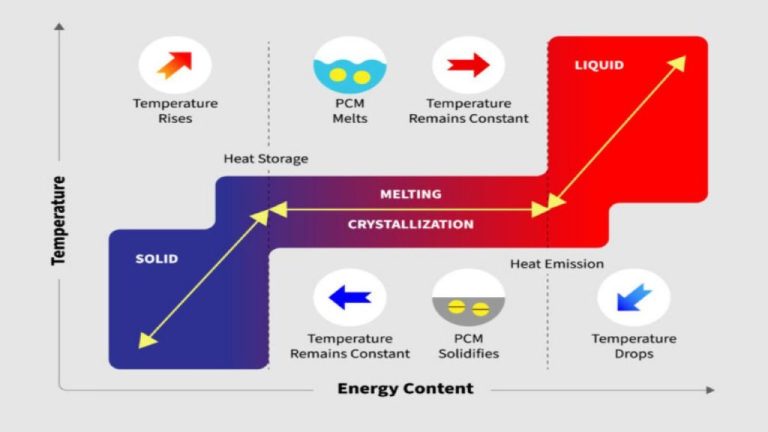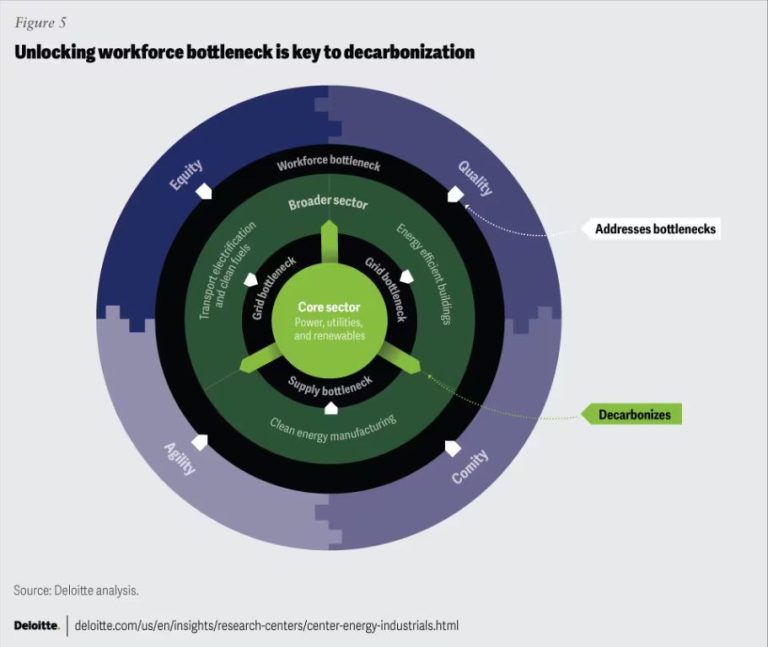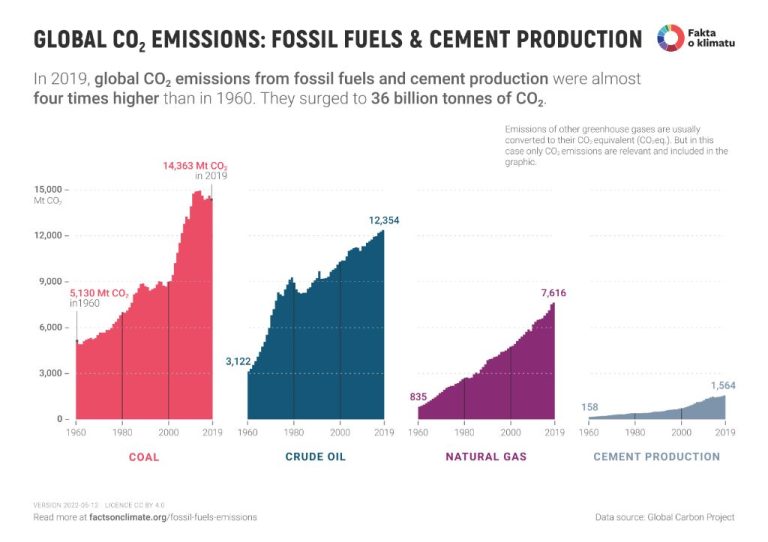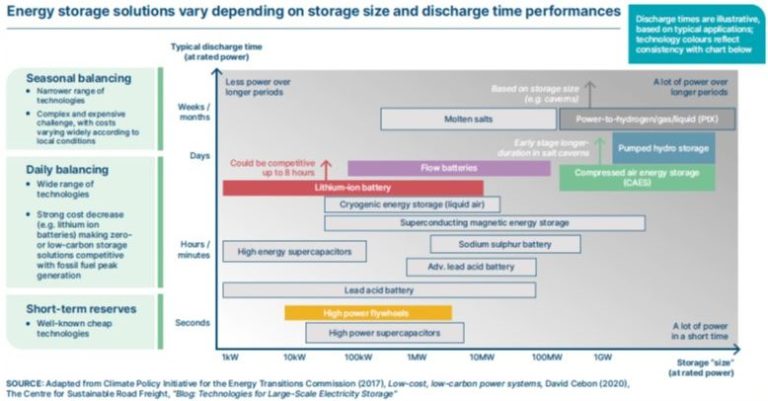What Is The Worldwide Carbon Cycle?
What is the Carbon Cycle?
The carbon cycle is the process by which carbon moves through the Earth’s various systems. Carbon is an essential building block of life on Earth, and the global carbon cycle maintains a balance between the carbon in the atmosphere, oceans, plants, animals, soil, and fossil fuels.
Carbon cycles between these reservoirs in various forms. In the atmosphere, carbon exists mainly as carbon dioxide (CO2). Carbon dioxide enters the atmosphere naturally through volcanic eruptions, forest fires, and animal and plant respiration. The oceans contain dissolved carbon dioxide and organic carbon. On land, carbon is stored in plants, animals, soils, and fossil fuels like oil, coal, and natural gas.
The movement of carbon between these reservoirs occurs through various chemical, physical, geological, and biological processes. Photosynthesis by plants moves carbon from the atmosphere to the biosphere. Respiration by animals and decomposition move carbon from living organisms back to the atmosphere. The exchange of carbon between the oceans and atmosphere occurs slowly over years through gas exchange across the air-sea interface. Over millions of years, geological processes like fossil fuel formation and mountain building affect the global carbon reservoirs and fluxes.
Overall, the carbon cycle maintains equilibrium between carbon sinks that remove carbon from the atmosphere and carbon sources that add carbon. However, human activities like fossil fuel burning and deforestation have shifted the natural carbon balance by rapidly adding carbon to the atmosphere. Understanding the global carbon cycle is crucial for managing carbon emissions and mitigating climate change.
Carbon Reservoirs
The carbon cycle involves the movement of carbon between different reservoirs on Earth. The major carbon reservoirs are the atmosphere, biosphere, oceans, and fossil fuels/rocks.
The atmosphere contains carbon in the form of carbon dioxide gas (CO2). There are approximately 800 gigatonnes of carbon stored in the atmosphere.
The biosphere includes all living organisms on land and in the oceans. Plants, for example, absorb CO2 from the atmosphere through photosynthesis and store carbon in their tissues. There are roughly 2000 gigatonnes of carbon stored in the global biosphere.
The oceans contain the largest active reservoir of carbon, storing it as dissolved inorganic carbon and marine organisms. Oceans hold around 38,000 gigatonnes of carbon.
Fossil fuels and rocks provide a very large but inactive carbon reservoir. Carbon is locked away in fossil fuel deposits and sedimentary rocks for millions of years. There are estimated to be 10,000-100,000 gigatonnes of carbon stored this way.
Carbon Sources
Carbon sources refer to natural processes and human activities that release carbon in various forms into the different carbon reservoirs on Earth. The main natural carbon sources that add CO2 to the atmosphere are:
Respiration: All living organisms, including humans, animals, and plants, respire by taking in oxygen and releasing carbon dioxide. This continuous biological process transfers carbon from living biomass into the atmosphere.
Volcanic eruptions: CO2 is released from magma, or molten rock, during volcanic eruptions. While this occurs naturally, the quantity emitted can vary significantly between eruptions.
Forest fires: Natural wildfires, mostly caused by lightning, burn vegetation and release the carbon stored in trees and soils back into the atmosphere. Increased wildfire frequency from climate change is now a major carbon source.
Other natural sources include decomposition, ocean outgassing, and methane released from wetlands. However, human activities now release over 100 times more CO2 than volcanoes, accounting for the bulk of emissions destabilizing Earth’s carbon cycle.
Carbon Sinks
Carbon sinks are natural reservoirs that absorb and store carbon dioxide from the atmosphere. The main natural carbon sinks on Earth are:
- Photosynthesis by land plants and phytoplankton – During photosynthesis, plants use sunlight, water, and carbon dioxide to produce carbohydrates for growth. This process removes CO2 from the atmosphere.
- Absorption by the oceans – The oceans are a massive carbon reservoir, containing about 50 times more carbon than the atmosphere. Ocean surface waters absorb CO2, which can then be transported to deeper waters by currents and mixing.
- Soil and detritus – Plant litter and organic matter in soils store large amounts of carbon.
On land, forests and soil ecosystems are particularly important carbon sinks. The ocean is the largest active carbon sink, absorbing over a quarter of human-caused CO2 emissions. Enhancing natural sinks through reforestation, soil management, and conservation practices could help mitigate climate change.
Human Impact
Human activities have substantially increased the amount of carbon in the atmosphere, disrupting the natural balance of the carbon cycle. The primary ways humans impact the carbon cycle are:
- Burning fossil fuels like coal, oil, and natural gas releases large amounts of carbon into the atmosphere that had been trapped underground. Fossil fuel emissions from transportation, electricity generation, manufacturing, etc. are the biggest contributor.
- Deforestation to clear land for development and agriculture also releases significant carbon stored in trees and soil. Forests act as carbon sinks, so losing them leads to more atmospheric carbon.
- Modern agricultural practices involving fertilizers, livestock, and land-use changes generate greenhouse gas emissions, adding to the carbon imbalance.
As a result, atmospheric carbon dioxide levels have risen over 40% since pre-industrial times. This human-caused disruption of the carbon cycle is a major driver of climate change.
Carbon Exchange Between Reservoirs
Carbon is constantly exchanged between reservoirs on Earth in what is known as the carbon cycle. The main reservoirs involved in the carbon cycle are the atmosphere, the ocean, the land (including soil, plants and animals), fossil fuels and marine sediments and sedimentary rocks.
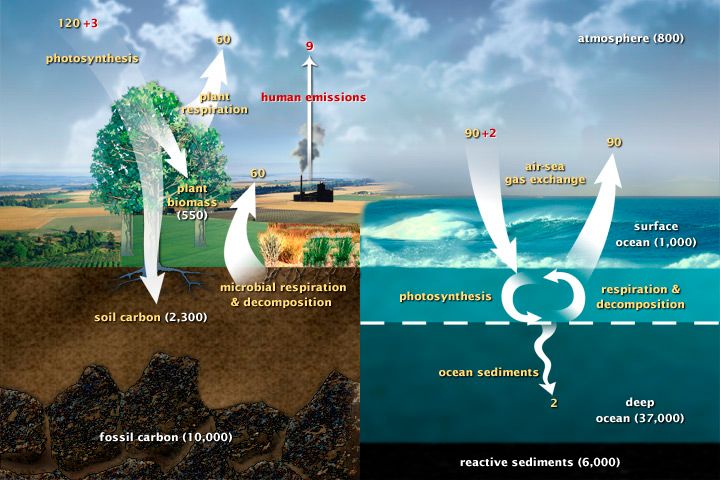
Carbon dioxide is exchanged between the atmosphere and the ocean through the processes of diffusion and ocean circulation. When the concentration of carbon dioxide is higher in the atmosphere than in the ocean surface, carbon dioxide diffuses into the ocean. The ocean also absorbs carbon dioxide from the atmosphere through phytoplankton photosynthesis. The ocean releases carbon dioxide back into the atmosphere through respiration of marine organisms and ocean surface gas exchange.
On land, carbon is exchanged between plants and soil through photosynthesis and respiration. Plants absorb carbon dioxide from the atmosphere through photosynthesis, incorporating the carbon into sugars and plant matter. Some of this carbon returns to the atmosphere through plant and animal respiration. Plants also deposit carbon into the soil through dead roots, leaves and plant material. Soil releases carbon back into the atmosphere through respiration of decomposer organisms.
The exchange of carbon between the atmosphere, ocean and land reservoirs helps maintain a natural balance of carbon on Earth. However, human activities in recent decades have disturbed this balance, leading to a buildup of carbon dioxide in the atmosphere and ocean acidification.
Carbon Sequestration
Carbon sequestration refers to the long-term capture and storage of carbon dioxide from the atmosphere to mitigate climate change. It involves removing CO2 from the air and depositing it in reservoirs where it won’t enter the atmosphere for a long time.
There are several ways carbon can be sequestered:
-
Reforestation – Planting new forests that absorb CO2 as they grow. Forest management practices like conservation and avoided deforestation can also increase carbon storage.
-
Agricultural practices – Techniques like no-till farming, cover crops and crop rotation can increase carbon absorbed and stored in soil.
-
Coastal wetland restoration – Restoring degraded wetlands provides carbon storage “blue carbon” sinks.
-
Biochar – Biomass heated without oxygen produces charcoal-like biochar which can enhance soil’s carbon storage when added to fields.
-
Direct air capture – Emerging technology to filter CO2 from ambient air and sequester it underground or use it industrially.
-
Ocean fertilization – Promoting phytoplankton growth in oceans enhances CO2 absorption and ocean storage when plankton die and sink.
Implementing more carbon sequestration methods can help mitigate climate change by balancing some of humanity’s carbon emissions.
Climate Change Impact
Human activities such as burning fossil fuels, deforestation, and industrial processes have dramatically increased the amount of carbon dioxide in the atmosphere. Since the Industrial Revolution began in the mid-1700s, the concentration of atmospheric carbon dioxide has increased over 40%. Much of this extra CO2 comes from burning fossil fuels like coal, oil, and gas to generate electricity and power our vehicles. Deforestation also contributes to rising CO2 levels by removing trees that would otherwise absorb and store carbon through photosynthesis.
This rise in atmospheric CO2 is problematic because CO2 and other greenhouse gases trap heat in the atmosphere, causing global temperatures to rise. The planet’s average surface temperature has increased by about 1°C since the late 19th century. While this may seem small, it has major consequences for weather patterns, sea levels, ecosystems, and human health and infrastructure. Scientists overwhelmingly agree that current global warming trends are extremely likely to have been caused by human activities.
If CO2 emissions continue unchecked, climate change impacts are expected to include more frequent and extreme weather events, shrinking glaciers and ice sheets, species extinctions, falling crop yields, rising seas, and displacement of coastal communities. These changes would significantly disrupt ecosystems and threaten water and food supplies for hundreds of millions of people. The impacts are already being felt today in the form of heat waves, wildfires, droughts, and storms around the world. Urgent action is required to reduce emissions and limit additional warming to avoid the most severe climate change risks.
Restoring the Balance
The carbon cycle is a complex and delicate natural process that has been significantly disrupted by human activities. However, there are ways we can help restore balance to the carbon cycle:
Reduce Emissions. The most impactful thing we can do is drastically reduce our burning of fossil fuels like coal, oil and natural gas. These activities pump massive amounts of carbon into the atmosphere. By transitioning to renewable energy sources like solar, wind and hydropower, we can significantly cut emissions.
Plant Trees. Trees play a vital role by absorbing CO2 through photosynthesis. Large scale reforestation efforts, especially in tropical regions, can help remove billions of tons of carbon from the atmosphere.
Improve Farming Practices. Adopting sustainable agriculture techniques like low/no till farming, crop rotations and use of cover crops can help capture carbon in the soil.
Protect Carbon Sinks. Preventing deforestation and degradation of wetlands, mangroves, seagrass and peatlands preserves their ability to sequester carbon.
With deliberate, collective action across industries and nations, we can restore balance to the carbon cycle and create a more sustainable future.
Conclusion
The carbon cycle plays a crucial role in regulating Earth’s climate and sustaining life. Human activities have disrupted the natural balance of the carbon cycle by pumping out carbon dioxide into the atmosphere. Restoring balance to the carbon cycle is key to mitigating climate change.
As discussed, carbon constantly moves between the atmosphere, biosphere, oceans, and geosphere in a cyclical process. This exchange regulates the amount of carbon in the atmosphere, which impacts global temperatures. When in balance, the carbon cycle maintains a stable climate that enables life on Earth.
However, human activities like burning fossil fuels, deforestation, and industrial processes have added excess carbon into the atmosphere. This carbon overload is trapping heat, causing global temperatures to rise. To curb climate change, we must reduce carbon emissions and implement measures like reforestation to recapture atmospheric carbon.
With collective global action, we can restore balance to the carbon cycle. Doing so will reduce the impacts of climate change, enabling us to pass on a sustainable planet to future generations.

